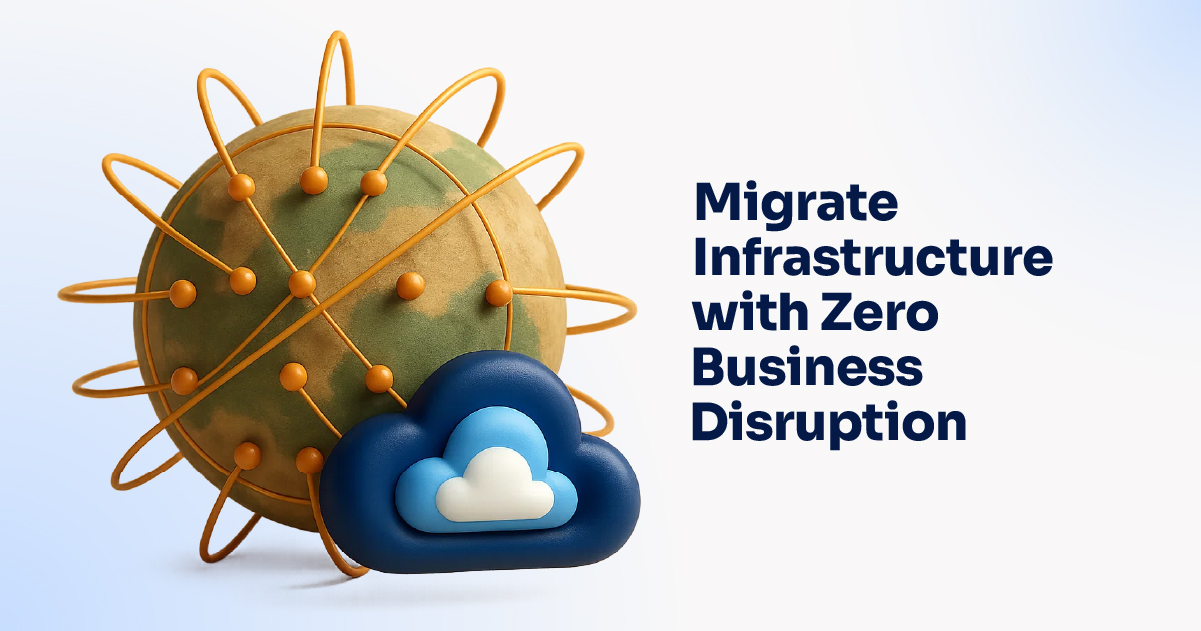
In today’s fast-paced digital landscape, organizations are under immense pressure to modernize their IT infrastructure. Cloud adoption, scalability, cost savings, and improved agility are among the many benefits driving this transformation. However, one major concern that holds many businesses back is the fear of downtime and disruption during infrastructure migration.
The good news? It is entirely possible to migrate infrastructure with zero business disruption—but it takes careful planning, the right tools, and expert guidance.
Why Infrastructure Migration Is Necessary?
Migrating your IT infrastructure—whether it involves servers, applications, storage, or networking components—can significantly improve performance, reduce operational costs, and provide better support for remote work and customer experiences. However, even the most promising migration project can go off the rails if it’s not planned meticulously.
Disruption during migration can lead to:
- Revenue losses due to application downtime.
- Damaged customer relationships.
- Internal productivity dips.
- Security risks due to incomplete or improperly configured systems.
This is why a zero-downtime approach is not just ideal—it’s essential.
Step-by-Step Guide to Migrate Infrastructure Seamlessly
1. Define Clear Migration Goals
Before any action is taken, define why you’re migrating and what you expect to gain. Is it cost optimization? Better performance? Improved scalability?
Establish key metrics (KPIs) to measure post-migration success. These could include uptime, response times, cost savings, or employee productivity. Knowing the “why” behind the migration guides every decision that follows.
2. Choose the Right Migration Strategy
There’s no one-size-fits-all solution. Your migration strategy depends on your existing infrastructure, application complexity, business continuity requirements, and compliance needs. Common strategies include:
- Lift and Shift: Moving applications and data “as is” to the new environment.
- Replatforming: Making minimal changes for performance improvement.
- Refactoring: Redesigning applications to fully leverage cloud-native features.
Consulting with experienced Cloud Migration Services providers helps determine which strategy aligns best with your goals while minimizing risks.
3. Conduct a Thorough Infrastructure Assessment
Assess your current infrastructure to identify:
- Interdependencies between applications and services.
- Security vulnerabilities.
- Resource utilization and cost metrics.
- Legacy systems that may need upgrading.
This assessment lays the groundwork for determining what to migrate, when to migrate it, and how to maintain uptime.
4. Create a Detailed Migration Plan
A robust migration plan includes:
- A complete inventory of assets.
- A realistic timeline with milestones.
- A rollback strategy in case something goes wrong.
- Roles and responsibilities clearly defined for every stakeholder.
Prioritize workloads based on business impact. Start with non-critical systems to test the process before moving mission-critical infrastructure.
5. Leverage Automation and Migration Tools
Automation minimizes human error, accelerates timelines, and ensures consistency across environments. There are several tools available for infrastructure migration—ranging from open-source solutions to enterprise-grade platforms.
Professional Cloud Migration Services often come equipped with automation tools, templates, and experience that ensure smooth transitions and reduce the risk of business disruption.
6. Perform Migration in Phases
Phased migration (also called incremental migration) helps in:
- Minimizing risks by limiting the scope of each phase.
- Testing the environment with smaller workloads.
- Ensuring business operations continue as usual.
This strategy also allows your IT team to resolve issues on a smaller scale before scaling the migration across the entire infrastructure.
7. Test Rigorously Before and After Migration
Testing is one of the most critical components of a disruption-free migration. Perform the following:
- Pre-migration testing: Validate backup systems, connectivity, and infrastructure compatibility.
- Post-migration testing: Ensure applications function as expected, data integrity is maintained, and users have access.
Also, involve end-users during testing to validate real-world performance.
8. Ensure Continuous Communication
One of the most overlooked aspects of migration is communication. Stakeholders—including employees, IT teams, management, and sometimes even customers—should be informed about the migration plan and timeline.
Set expectations around performance changes, login credentials, training requirements, and support during and after the transition.
9. Establish Post-Migration Monitoring
Once the migration is complete, don’t assume everything will just work. Set up post-migration monitoring to track:
- Application performance.
- System uptime.
- Network latency.
- Security vulnerabilities.
Use this data to make final tweaks and optimize performance.
10. Work with a Trusted Migration Partner
Finally, the most effective way to ensure zero business disruption is by working with an experienced migration partner. They bring:
- Proven migration methodologies.
- Expertise across multiple platforms.
- Access to advanced tools.
- Ongoing support for post-migration optimization.
An expert partner ensures that your migration is successful and seamless.
Final Thoughts
Migrating your infrastructure doesn’t have to be a nightmare. With the right approach, tools, and expert guidance, you can ensure a seamless transition without causing any disruption to your business operations. The key is preparation, communication, and leveraging proven expertise.
Partnering with a trusted provider of Cloud Migration Services like Exinent can make all the difference. Their tailored solutions, automation capabilities, and experienced professionals help organizations migrate confidently, securely, and efficiently—without missing a beat.
Don’t let fear of disruption hold your business back. With the right strategy, infrastructure migration can be a stepping stone to greater agility, innovation, and growth.
